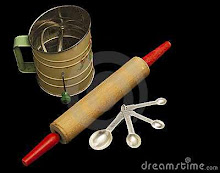Focaccia
From Wikipedia, the free encyclopedia
| part of a series on |
| Pizza |
|---|
Focaccia is popular in Italy and is usually seasoned with olive oil and salt, and sometimes herbs, and may be topped with onion, cheese and meat, or flavored with a number of vegetables. It is eaten as a snack in Italy and school children will often purchase a slice from a baker's on the way to school, to enjoy at break time.[citation needed]
In the late 19th century an Italian immigrant to the United Kingdom created a version of focaccia with a unique English twist. The local baker to Kings Clipstone, Nottinghamshire developed his version, known locally as Italian Lard Bread, using that staple ingredient of every Englishman's diet at that time in history, lard.[citation needed]
Focaccia doughs are similar in style and texture to pizza doughs, consisting of high-gluten flour, oil, water, salt and yeast. It is typically rolled out or pressed by hand into a thick layer of dough and then baked in a stone-bottom or hearth oven. Bakers often puncture the bread with a knife to relieve bubbling on the surface of the bread.
Also common is the practice of dotting the bread. This creates multiple wells in the bread by using a finger or the handle of a utensil to poke the unbaked dough. As a way to preserve moisture in the bread, olive oil is then spread over the dough, by hand or with a pastry brush prior to rising and baking. In the northern part of Italy, lard will sometimes be added to the dough, giving the focaccia a softer, slightly flakier texture. Focaccia recipes are widely available, and with the popularity of bread machines, many cookbooks now provide versions of dough recipes that do not require hand kneading.
Focaccia can be used as a side to many meals, as a base for pizza, or as sandwich bread.
In ancient Rome, panis focacius[1] was a flat bread baked in the ashes of the fireplace. The word is derived from the Latin focus meaning “centre” and also “fireplace” – the fireplace being in the centre of the house. In American-English, it is sometimes referred to as focaccia bread. As the tradition spread, the different dialects and diverse local ingredients resulted in a large variety of bread (some may even be considered cake).
The basic recipe is thought by some to have originated with the Etruscans or ancient Greeks, but today it is widely associated with Ligurian cuisine.[citation needed]
Due to the number of small towns and hamlets dotting the coast of Liguria, the focaccia recipe has fragmented into countless variations (from the biscuit-hard focaccia of Camogli to the oily softness of the one made in Voltri), with some bearing little resemblance to its original form. The most extreme example is the specialty "focaccia col formaggio" (focaccia with cheese) which is made in Recco, near Genoa. Other than the name, this Recco version bears no resemblance to other focaccia varieties, having a caillé and cheese filling sandwiched between two layers of paper-thin dough. Regional variations also exist, such as focaccia dolce (sweet focaccia), popular in some parts of north-western Italy, consisting of a basic focaccia base and sprinkled lightly with sugar, or including raisins, honey, or other sweet ingredients.
Another widespread variation is the Focaccia Barese, common in the provinces of Bari, Brindisi, Lecce and Taranto. It usually comes in three variations: classic focaccia with fresh tomatoes and olives, potato focaccia with potato slices 5 mm thick and white Focaccia with salt grains and rosemary. Some other variations include peppers, onions, eggplant or other vegetables. One regional variant, from the city of Recco, is even being considered for European Union PGI status.
In Burgundy, focaccia is called "foisse" or "fouaisse", and in Provence and Languedoc it's "fogassa" or, more commonly, the French "fougasse". In Argentina, it is widely consumed under the name fugazza, derived from fugassa in the native language of Argentina's many Ligurian immigrants. The Spaniards call it "hogaza". Focaccia is present in many variants in Italy itself, for example the focaccia alla genovese, originated in Genoa, the focaccia alla barese, from Bari, or the focaccia alla messinese, from Messina. The Sicilian-style pizza, and the Roman pizza bianca (white pizza) must also be considered to be a variant of focaccia. Focaccia is used extensively as a sandwich bread outside of Italy.
http://en.wikipedia.org/wiki/Focaccia










No comments:
Post a Comment